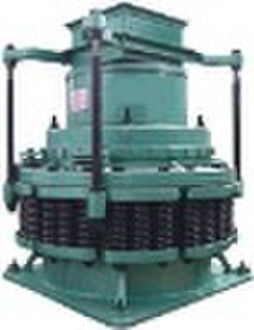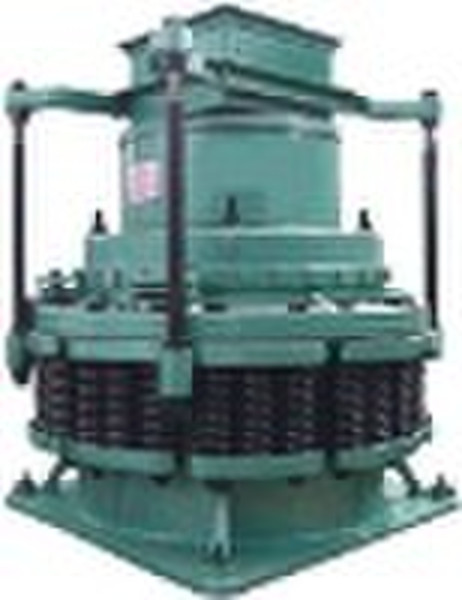high quality and low costs stone hydraulic spring

Jacky Ge
联系人姓名
基本信息
| 类型 | 锥体压缩机 |
|---|---|
| 条件 | 新的 |
| 出生地 | Shandong China (Mainland) |
| 牌子的名字 | Jieli |
| 模式的数量 | PYB1750 |
| 能力(t/h) | 280-480T/H |
high quality and low costs stone hydraulic spring cone crusherCrusher Applicationhigh quality and low costs stone hydraulic spring cone crusherare widely used in industries like metallurgy, construction, road building, chemistry etc, to crush many kinds of mid-hard or hard rocks and ores such as iron ore, limestone, granite, basalt, quartz etc. The standard ones are used for intermediate crushing; the medium ones are used for fine crushing; and the short head ones are used for super thin crushing[high quality and low costs stone hydraulic spring cone crusher Technical Data Technical Data Of Cone Crusher: TypeWeight (T)Power (kw) Outside diameter Of crushing cone (mm)Max Feeding (mm) The adjusting range of discharger (mm)capacity (t/h) PYB6005306006512-2520-40PYD5.5600352-1312-23PYB90011.25590011515-5060-105PYZ11.2900605-2050-90PYD11.3900503-1320-65PYB120024.7130120014520-50110-168PYZ2512001008-2542-135PYD25.31200503-1518-105PYB175050.3160170021525-50280-480PYZ50.3170018510-30115-320PYD50.21700855-1575-230PYB220080260 280220030030-60590-1000PYZ80220023010-30200-580PYD81.422001005-15125-350 high quality and low costs stone hydraulic spring cone crusher are normally used as a secondary crusher but can be used as a primary crusher if used in processing a sand and gravel deposit. Normally a jaw crusher is used for the initial or primary crushing of larger rocks. To see an illustration of the difference between a standard cone crusher and a shorthead or fine crusher, and to see what the inside of a cone crusher looks like, including an animation of a cone crusher working A typical standard head cone crusher has an average reduction ratio of 6-10:1. That means an average rock will be fractured into 6-10 smaller rocks after passing through a cone crusher. A short head , also known as a fine cone crusher, typically has a 4-6:1 ratio.The maximum size of your target final product will be a good guide to whether you need a standard or fine cone crusher, either as a secondary crusher or a tertiary crusher.Cone crusher capacity is primarily determined by the closed side discharge setting and the diameter of the cone. The greater the diameter and discharge setting the greater the capacity. Conversely, the smaller the diameter and discharge setting, the smaller the capacity.In all types of crushing the greatest capacity can be achieved if the maximum final product size and everything smaller is scalped (removed) prior to being fed into the crusher. That will increase capacity and wear life of the wear parts.It is also important to properly feed the cone crusher. The feed chute should be arranged to provide a uniform and consistent amount of feed material so it is distributed evenly around the head and keeps the crushing chamber filled at all times if possible. In choosing what size of cone to purchase it is important to match the entire crushing circuit. That means the feed system, scalping system, jaw crusher, cone crusher, and screens must all be designed to work together.Because raw feed consists of various sizes of rocks, a good screening process will enable you to use the smallest crusher while still obtaining the greatest production capacity. That will save you both capital costs and operating costs.A common mistake is thinking that obtaining a 200 tons per hour (TPH) capacity requires a jaw and cone to each have a 200 TPH capacity. We offer a service using a computer program that can provide a good estimation of what size of crushers and screens will be needed to produce a target tons per hour. Of course, final capacity is dependent upon many factors. If you would like an analysis please CONTACT US.
交货条款及包装
Packaging Detail: export case packing Delivery Detail: in 10 days after confirming
端口: Qingdao/Shanghai/Lianyungang
付款条款
Documents Against Payment
Letter of credit
Telegraphic transfer
-
支付方式
我们接受:









